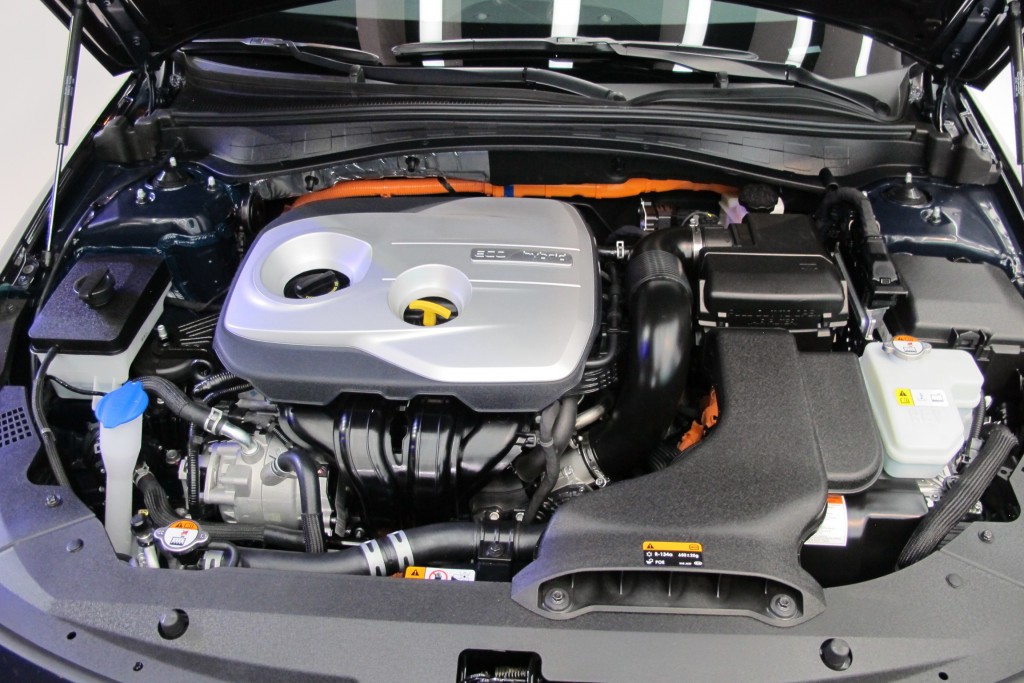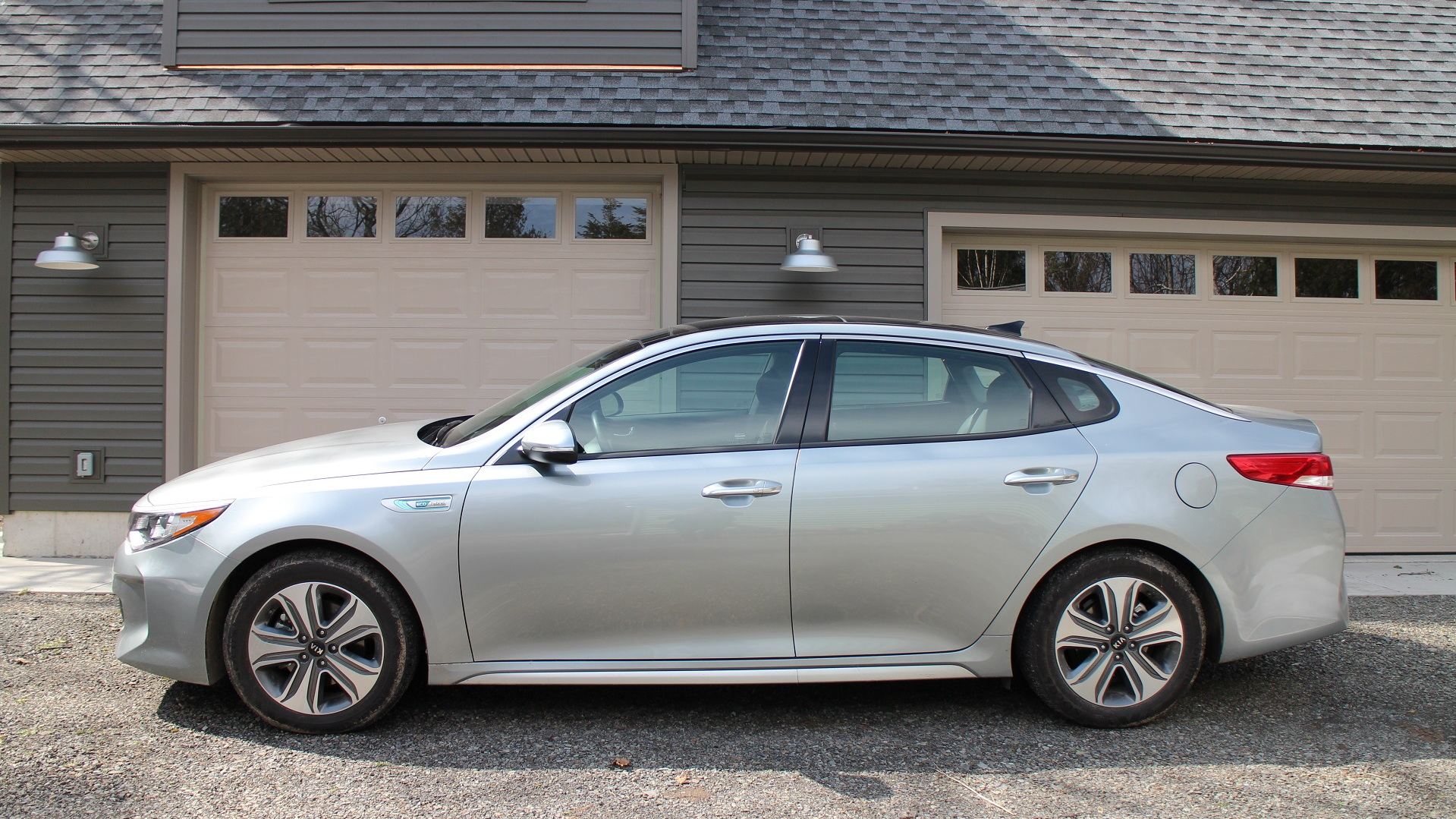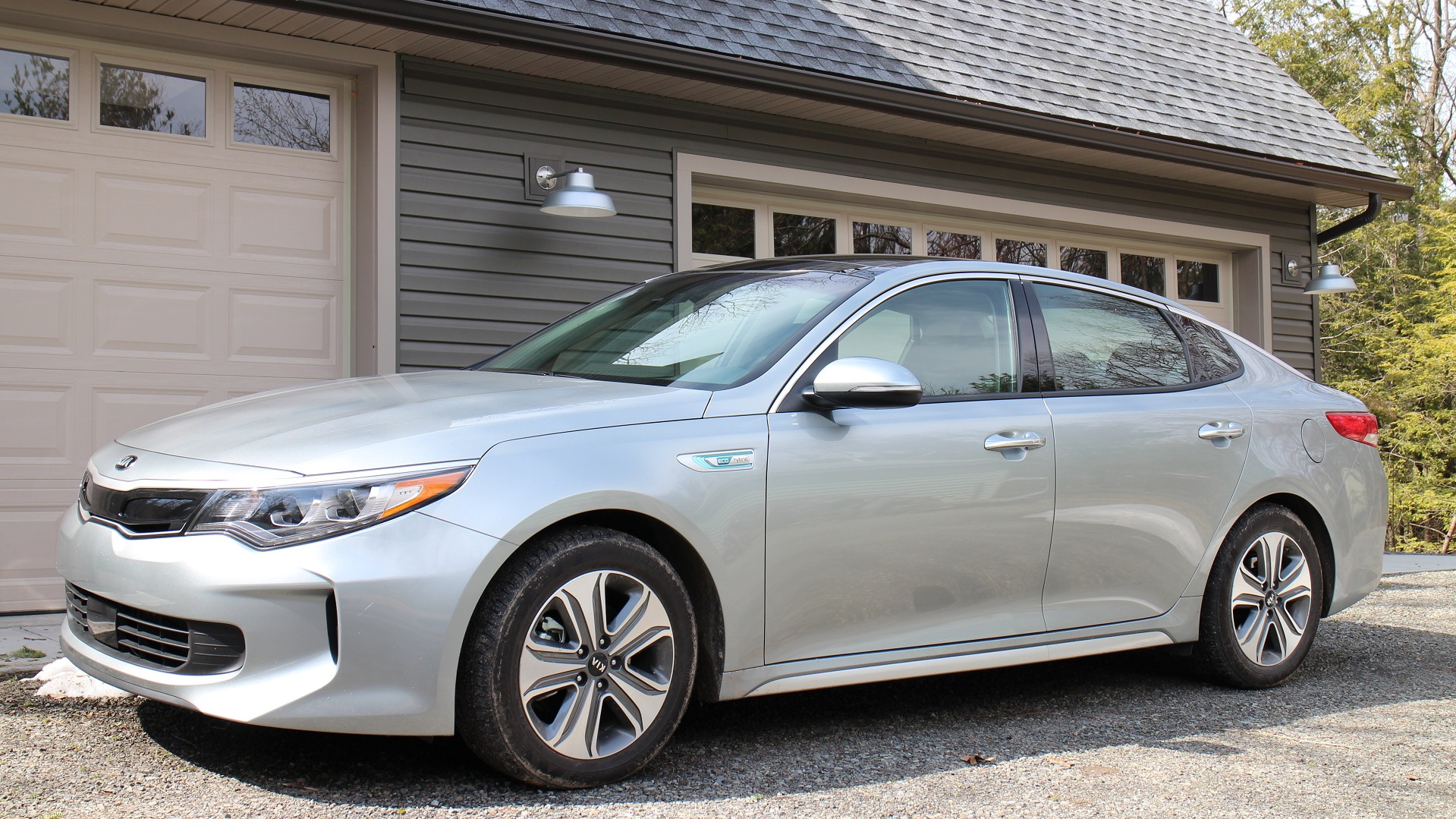The 2017 Kia Optima Hybrid is one of a pair of hybrid mid-size sedans from the Korean maker Hyundai-Kia.
It shares its underpinnings, though not a single body panel or styling flourish, with the higher-volume Hyundai Sonata Hybrid.
We found it to be a comfortable, stylish sedan that gave us good fuel economy—almost as good as the car's EPA rating.
DON'T MISS: 2017 Kia Optima Hybrids: Details On 27-Mile Plug-In Hybrid, Live Photos, Video (Feb 2016)
The hybrid version of the Kia Optima sedan is EPA-rated at 39 mpg city, 46 highway, and a combined 42 mpg.
Over 340 miles, comprising our usual two-thirds highway driving and one-third in lower urban and suburban speeds and traffic, we got an indicated 39.4 mpg on the car's trip computer.
That's well within the 10-percent leeway we expect from hybrids, and it came in a variety of winter and spring temperatures from 20 to 50 degrees F.

2017 Kia Optima
The Optima Hybrid uses a 154-horsepower 2.0-liter 4-cylinder engine optimized for fuel economy paired to a 38-kilowatt (50-hp) single electric motor that sits between the engine and a 6-speed dual-clutch automated manual transmission, or DCT.
Total maximum output of the powertrain from the engine and electric motor combined is given as 192 hp and 271 lb-ft of torque.
We found the powertrain suitably smooth, though shifts among the six fixed gears of the DCT remained evident—and slightly unexpected given the continuously variable behavior of more familiar two-motor hybrid systems like those in Ford and Toyota hybrids.
READ THIS: 2017 Kia Niro: gas mileage review
We haven't yet tested the Kia Optima Plug-In Hybrid that's now on limited sale in certain states, but the conventional hybrid Optima is a worthy competitor to hybrid versions of the competing Chevrolet Malibu, Ford Fusion, Hyundai Sonata, and Toyota Camry.
The 2018 Camry Hybrid will be an all-new design, using a new generation of Toyota's hybrid system first offered in the fourth-generation 2016 Prius.
And while the hybrid Optima isn't at the top of the combined mileage-rating charts, any mid-size sedan that can deliver a real-world 40 mpg remains well ahead of the curve in today's market.

2017 Kia Optima Hybrid, 2016 Chicago Auto Show
A few random observations from our time with the 2017 Optima Hybrid:
- We continue to applaud Kia's straightforward, intuitive, easy-to-use instruments, controls, and display screens; they're some of the best in the business
- Underway, the Optima Hybrid will accelerate on electricity only to 10 mph, but a light throttle foot is required to keep it there afterward
- It will, however, drop into electric-only running for surprisingly long stretches of level road, even at speeds of 45 mph or more
- We still get surprised when it's in all-electric mode and the car upshifts or downshifts; that's the DCT at work, but the electric motor must have a very narrow maximum-power band
- The blending of regenerative and friction brakes is good (much better than the company's earliest efforts), but it can feel lumpy through the pedal due to those electric-only downshifts
- Admittedly in the realm of #FirstWorldProblems, the Optima's driver-seat heater was slow to warm up and not very powerful even on its hottest setting
CHECK OUT: All-electric Kia Niro EV to come in 2018, says Kia exec
Our "Aluminum Silver" Optima Hybrid EX test car carried a base price of $30,990.
It had just one option, a $5,000 Technology Package that bundled active LED headlights, a huge panoramic sunroof, heated and ventilated front seats, a power-adjusting front passenger seat with lumbar support, heated outboard rear seats, and a collection of active-safety systems.
Those included adaptive cruise control, forward collision warning and automatic emergency braking, blind-spot detection, lane-departure warning, rear cross-traffic alert, rear park assist, and an automatically dimming rear-view mirror.
With a mandatory $895 delivery fee, the bottom line on the window sticker was $36,885.
_______________________________________

















